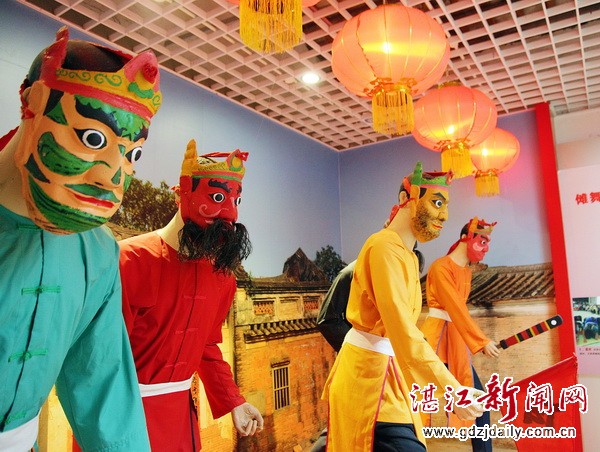Home> Top News
Zhanjiang keeps ancient dance alive
Updated: 2016-05-06
More than a thousand years have passed but every year the residents of a small village in the port city of Zhanjiang still gather to carry out an ancient tradition, known simply as "Nuo".
The second Nuo Cultural Festival in Zhanjiang's Mazhang district kicked off in Jiuxian village, in the town of Huguang on May 3.
Nuo, also known as the "Nuo sacrifice" or "Nuo ceremony", was originally a kind of magical and sacrificial ritual held to expel evil spirits and pestilence. Its name is derived from one such ritual, where people used to shout "nuo, nuo" to drive away the devil.
According to Zhu Weiguo, president of the Zhanjiang Folk Culture Research Society, Jiuxian village used to be a county seat in the Sui, Tang and Song dynasties for more than 380 years, from AD 590 to 974. Now the village is home to a number of historic sites such as Taishan Mansion, Penggong Ancestral Temple and Wenbi Tower which all date back to the Tang Dynasty.
The Nuo dance, known as the "dance of the living fossil", is an ancient mask dance, integrating elements of martial arts and music, as well as carvings, and is listed as a national intangible cultural heritage.
"Kaobing", a Jiuxian-style Nuo dance, originates from an ancient sacrificial ritual, which features a lively and spectacular atmosphere. It has developed into a folk custom for villagers to pray for blessings and peace.
 |
|
Nuo dance puppets displayed at the Nuo Culture Exhibition Room in Jiuxian village, Mazhang district, Zhanjiang.[Photo / Zhanjiang Daily] |
